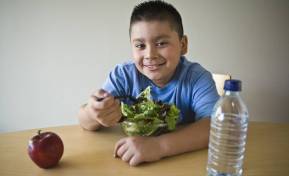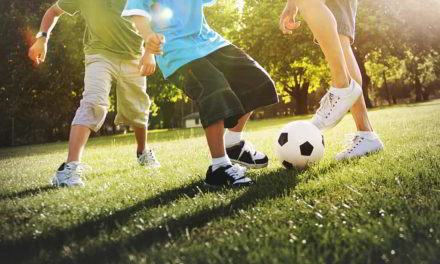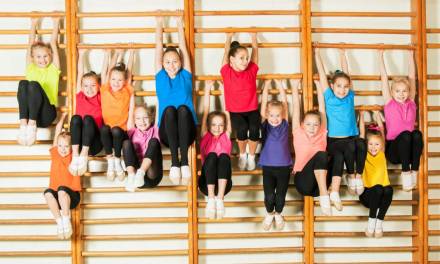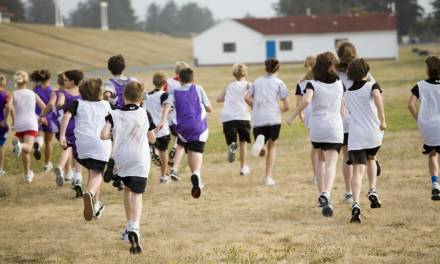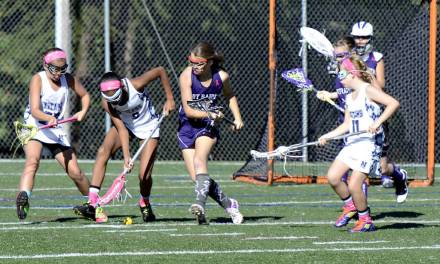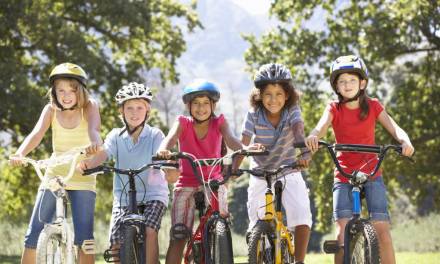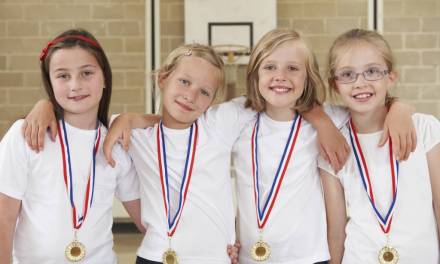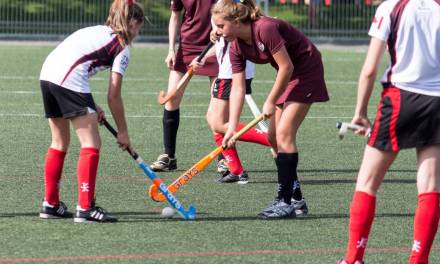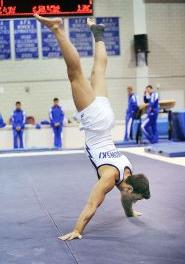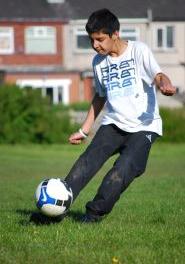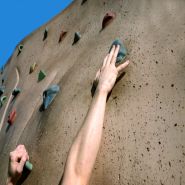
Fitness & Health
RECOMMENDED
Mental health matters: Supporting teachers and students through PE
Reading time: 2 minutes
Physical education (PE) is often seen as a way to improve physical fitness and teach teamwork. However, its role extends far beyond the gym and playing field. PE can be a powerful tool for promoting mental health and well-being for both students and teachers. In a world where mental health challenges are on the rise, integrating mental health support into the PE curriculum is more important than ever.
Read MoreFestive Fitness: Holiday-Themed PE Fun for the Classroom
Reading time: 2 minutes
‘Tis the season to be jolly, and what better way to spread holiday cheer than with some festive-themed PE activities? Get your students moving and grooving with these fun and engaging ideas that will keep them active and entertained all season long!
Read More7 interactive ways to tackle childhood obesity
Reading time: 2 minutes
Childhood obesity is a serious concern, but it doesn’t have to be a battle. By incorporating fun and interactive activities into your family’s routine, you can tackle weight management and promote a healthy lifestyle in a way that’s enjoyable for everyone. Here are 7 ideas to get you started:
Read More
Keeping children fit and healthy over Christmas
Reading time: 2 minutes
While the festive season is a time for celebration and indulgence, it’s crucial to ensure that children maintain their fitness and well-being amidst the festivities. By incorporating physical activity and healthy habits into their holiday routine, you can help them enjoy the festivities without compromising their health.
It’s important that when students break up from school they remain active and do not exhibit lazy tendencies. Here are some ways we can encourage children to stay fit and healthy, yet still enjoy the Christmas season.
Read MoreHow can a PE teacher support students with mental health issues and anxiety within PE lessons?
Reading time: 2 minutes
In a generation where the prevalence of mental health issues is greater than ever and still increasing, educators must use the opportunities that they are given to support the young people whom they work with. This is especially pertinent for PE teachers, who can use physical activity as a tool to support mental health and well-being among their students. Below are ways in which this could be achieved.
Read MoreSimple strategies to improve the well-being for PE pupils
Reading time: 3 minutes
The World Health Organisation (WHO) defines health as “a state of complete physical, mental and social wellbeing and not merely the absence of disease or infirmity”. As PE teachers, we are in a unique position where we can positively impact all three strands of well-being among our pupils. In this article, we will be exploring a range of simple strategies to help PE teachers maximise pupil wellbeing.
Read More5 Ways to Improve the Well-being of PE Staff
Reading time: 2 minutes
Physical education (PE) staff play an important role in the health and well-being of children and young people. However, they can also be at risk of burnout and stress.
The Department for Education recently proposed a new plan to deliver high-quality PE and sport for all pupils. This should allow more support for teachers and students regarding their physical education.
Read More3 reasons why physical education benefits mental health, wellbeing and development
Reading time: 2 minutes
Physical education plays a significant role in the Mental health and well-being of children. Research published by the National Library of Medicine stated that:
“Regular physical activity promotes growth and development and has multiple benefits for physical, mental, and psychosocial health that undoubtedly contribute to learning”
3 Ways You Can Support Students’ Mental Health With Physical Education
Reading time: 3 minutes
Mental health is as important as physical health for people of all ages. Having a good mental health state is crucial for a healthy lifestyle. Mental health for students becomes even more important as they have to face numerous challenges and uncertainties. Many experience anxiety associated with academic performance, career choices, and even societal pressures. These numerous factors ultimately lead to severe stress, panic attacks, and, in some cases, isolation.
Most students may even face violence or a lack of support from their parents, friends, and families. In these cases, teachers might be the only support system they have. Hence, it is crucial for teachers and mentors to support their students in whatever way they can. The most effective method to do so would be through the means of physical education, as physical activities refresh the mind and help increase focus, promote growth, build up mental capacity, and provide numerous other benefits. Here are 3 ways you can support students’ mental health through physical education:
Read MoreWhy PE can help with children’s mental health following COVID
Reading time: 3 minutes
In the last months, there has been a significant increase in e-learning, which has resulted in students and instructors entering a new world of virtual lectures, tutorials, and evaluations. This has had a substantial impact on education. Regarding technology and availability, e-learning presents a challenge not just to students but also to their instructors.
Read MoreThe importance and benefits of a defibrillator for a pe department
Reading time: 2 minutes
With the recent announcement that every state school in the UK will have a defibrillator by the end of the 2022/23 school year, we look at the importance and benefits of having these life-saving pieces of technology located within easy reach of the P.E. department.
According to the British Heart Foundation, there are over 30,000 hospital cardiac arrests (OHCAs) in the UK each year. Unfortunately, the chances of survival are extremely low- just 1 in 10 people in the UK survive an OHCA. One of the main contributory factors to this disappointing figure is the time taken to begin treatment of the casualty.
AEDs (Automated External Defibrillators) are used in addition to CPR to increase the chances of survival after a cardiac arrest.
Read MoreChildren and physical education – why it’s so important
Reading time: 3 minutes
Children and their academic development can be improved through physical education after the pandemic hampered their progress.
Read MoreParents call for further physical activity pursuit in schools after health drawbacks from COVID
Reading time: 3 minutes
Parents have recently called for schools to pursue physical activity after fears for their children’s health being hampered due to the recent COVID lockdown.
Read More5 fun fitness drills for isolation
Reading time: 2 minutes
Keeping fit has a range of benefits which means it should not be forgotten about during isolation. By taking part in fitness drills you can strengthen your immune system, boost your mental health and feel better about yourself during frightening times.
The UK Government has stressed the need to only leave the house for essentials, or to complete one form of exercise per day.
This blog post will provide you with a range of fun fitness drills, suitable for all ages, which you can complete in your home and garden.
Read MoreYou can still revise at home if school closes
Reading time: 2 minutes
Speculation is mounting that schools could close for a significant period due to coronavirus – but you can still revise at home to ensure you don’t fall behind on preparation for summer exams.
Schools across the UK have been told to brace themselves for two week closures – and told to get ready GCSE and A-level coursework, as well as homework.
The Government COBRA meeting this afternoon is likely to decide when and for how long the school closures will be in operation. This blog post explains how during the inconvenience which is likely to be caused due to the virus, PEOffice can help you to revise at home.
Read MoreInternational Women’s Day: One million more women are cycling
Reading time: 3 minutes
British Cycling has announced that one million more women are cycling now than in 2013.
The statement comes just days before International Women’s Day, which takes place this Sunday. It aims to celebrate the social, economic, cultural and political achievements of women.
The target meets the organisation’s strategy to inspire one million more women to ride, race and be part of British Cycling by 2020; and it is a huge step to reducing the historic gender gap within the sport.
But what does the announcement mean for cycling and fitness for women? This blog post explains.
Read MoreHow coronavirus is affecting sporting events
Reading time: 4 minutes
The World Health Organisation (WHO) said yesterday that the world is in “unchartered territory” on the coronavirus outbreak. The UK Government is today expected to announce a plan to combat the virus, including an effect on school, travel arrangements and sporting events.
Sporting events have already been affected heavily by the virus around the world. Major international events have already been cancelled, while domestic sport in a number of countries is also under threat.
But what has been done so far to stop the virus spreading through sport – and how are this summer’s events such as the Olympics and European Championships likely to be affected. This blog post explains.
Read MoreEncouraging everyday activities and lifelong fitness
Reading time: 3 minutes
There is no doubt that being active is vital to our overall health. The NHS is now advising that children aged 5-18 do at least an hour of physical activity every day, and adults should aim for at least 150 minutes a week.
It is important to teach your students that exercise and fitness are also vital for their mental health and wellbeing, and not just their physical health.
Read MoreWhy children develop poor body image
Reading time: 3 minutes
In the second part of our series on exercise and body image, we look at what influences poor body image and the age at which such dissatisfaction occurs.
Children’s opinions of their bodies form at a very young age. In fact studies have shown that pre-schoolers as young as three are unhappy with their bodies.
Read MoreFitness and happiness
Reading time: 3 minutes
We stand on the verge of an all-out epidemic of childhood obesity. While we know all too well of the many heath implications of our youngsters’ struggle with weight issues, the implications for their mental health are lesser known and understood.
Yet, as we’ll go on to illustrate, fitness and happiness go hand in hand…
Read MoreBody image and exercise: the link
Reading time: 2 minutes
The link between exercise and body image is complicated. It is safe to say, though, that participating in a moderate amount of exercise – the government recommends a minimum of 150 minutes of moderate physical activity per week – generally improves body image.
Read MoreCan exercise help children learn?
Reading time: 2 minutes
You know that exercise is a non-negotiable in the fight against childhood obesity. You’ve probably heard the news that fit, active children go on to lead healthier, longer lives.
But are you aware of the ways in which exercise boosts brain power? Did you even dare imagine that frequently active kids are more engaged and put in a better academic performance when compared to their sedentary contemporaries?
Read MoreUsing PE to promote a positive body image
Reading time: 3 minutes
Lack of confidence and poor body image in girls as young as seven is driving them to give up sport, but what can be done to solve the problem and how can we use PE to promote a positive body image?
A lack of self-confidence is one of the biggest barriers to girls participating in sport, and one of the most problematic manifestations of this is poor body image. At a time when both obesity and eating disorders among young girls are at their highest, addressing this is of utmost importance.
Read MoreExtra-curricular PE to improve staff health and wellbeing
Reading time: 3 minutes
The expectations for teachers to deliver in an ever-increasingly results-driven work setting have never been so demanding, meaning the extreme stress levels experienced and felt by many teachers has made for a hot topic of discussion in recent years.
Read MoreImproving Fitness for Rugby League
Reading time: 3 minutes
Rugby League is perhaps one of the toughest sports around, with participants covering an estimated 9km during an 80-minute match. Being in the best possible shape for this physically enduring sport is imperative if you want to play well.
Read More5 simple playground activities for Primary schools
Reading time: 3 minutes
Who said that school games had to involve tech to engage little hands? Or that outdoor tasks needed to be complex to help develop things such as coordination, inquisitively or agility?
Here we’ve put together five classic ideas for playground activities that need minimal equipment for maximum fun and skill development.
Read MoreAccess for all – what you can do
Reading time: 2 minutes
In the final part of our series on getting kids moving more, we look at practical ways you can make sport more accessible.
Access to sport isn’t equal – whether it’s a lack of facilities, cost or a perceived lack of safety. Here we look at what you can do to help.
Read MoreIs sport accessible to all?
Reading time: 2 minutes
It’s not just lack of ability or desire stopping kids getting access to activity, there are a number of other barriers, too.
This series has looked at how to get kids moving, a goal we can all agree is worthwhile. But is physical activity accessible to all students? We look at some potential barriers preventing children from getting active.
Read MoreOvercoming the barriers to girls participating in sports
Reading time: 3 minutes
Previously, we’ve looked at why so few girls take part in sport, here we consider what you can do to break down the barriers.
Encouraging girls to exercise more regularly will improve their overall wellbeing and there are some simple, practical ways that you can help.
Read MoreIncreasing activity safely
Reading time: 2 minutes
It’s easy to overdo things when you’re starting out with a new exercise regime, and youngsters are particularly liable to get over-enthusiastic. Follow our advice to keep students safe and healthy.
If you’ve been following our series on getting kids moving, your students should already have made that all important first step to improving their activity levels.
Read MoreUsing exercise to improve mental health
Reading time: 2 minutes
We all know the physical benefits of regular exercise, but keeping active is good for mental health, too.
One in 10 children aged between five and 16 in the UK have a mental health disorder, according to a 2004 study carried out on behalf of the Office for National Statistics.
Read MoreWhat can you do to help fight childhood obesity?
Reading time: 2 minutes
Today, 62% of UK adults are overweight or obese – a figure that has skyrocketed over the past two decades, when 53% were placed into the same category.
Sadly these statistics are almost as scary when we look to our children, with one in three who are overweight or obese – numbering a staggering 4.3 million kids who fall into this bracket.
Read MoreUsing technology to encourage exercise
Reading time: 2 minutes
Technology is often cited as a key contributor to our children’s obesity levels.
Parents compete with games consoles, handheld devices, computers and social media when trying to encourage their children to lead a more active lifestyle, and this lack of exercise has a negative impact on participation and performance levels in school.
Read More5 ways to promote a more active lifestyle in children
Reading time: 3 minutes
You know that kids need to get moving more and you’ve got some idea of what they should be doing. But how are you going to encourage them to do so?
Here we give you some tips on what you can do.
Read MoreA healthy lifestyle isn’t just about doing sport at prescribed times
Reading time: 2 minutes
In part one of this series we looked at how the majority of UK children don’t get the government-recommended minimum of 60 minutes’ moderate exercise per day, and ways to address this.
The activities suggested can be categorised as four main types: everyday activities; getting out in nature; organised sports; and active play.
Here we’ll consider each in a bit more detail.
Read MoreMotivating children to be more active outside of PE lessons
Reading time: 2 minutes
Are your students getting enough exercise? Probably not, according to the latest research.
Government figures show that 79% of boys and 84% of girls don’t get the minimum of 1 hour of moderate exercise per day, as recommended by the UK chief medical officers.
Read MorePerception, confidence, body image, and teaching methods can all act as barriers to girls participating in sport
Reading time: 2 minutes
The factors given previously – and others – combine to give girls the impression that sport is not for them. Unlike boys, for whom excelling at sport is a good thing, girls are put off physical activity because they don’t want to be seen as unfeminine.
This is compounded by the media, which often portrays successful female athletes as masculine. Another participant in the BioMed Research International study stated: “Sport is seen as a manly thing to do…they [the media] don’t see it as a girly thing.”
Read MoreWhat barriers to participation prevent girls taking part in sports?
Reading time: 3 minutes
In the first part of this series on Breaking Down the Barriers to Girls’ Participation in Sport we looked at how the majority of girls don’t get the weekly recommended minimum amount of exercise.
In this second instalment, we identify the barriers to participating in physical activity that girls experience. So, why aren’t more girls taking part in sports?
Read MoreRecovering from sports injuries
Reading time: 2 minutes
Sports injuries do happen. Most of the time this isn’t a problem and kids especially bounce back quickly and easily. Sometimes, however, it can be more serious, resulting in an extended absence from sport and even school.
Enforced periods of inactivity are frustrating for any youngster, but particularly for those who are used to taking part in sport. An injured student may well turn to you for advice and support.
Read MoreImplementing a Bikeability scheme at your school
Reading time: 2 minutes
For many schools, the battle against childhood obesity is a significant issue. A combination of lack of funding for PE and extra-curricular activities, and a generation of children addicted to smartphones, computers and gaming consoles, has created an unhealthy environment for our children.
While almost 20% of children in Year 6 (aged 10-11) are obese, a further 14.2% are overweight…..9.1% of children in Reception (aged 4-5) are obese and 12.8% are overweight.
Why don’t school-age girls exercise enough?
Reading time: 2 minutes
Government figures show that the vast majority of young people don’t get the recommended minimum amount of 60 minutes exercise per day.
This is worse for girls than for boys: just 15% of girls achieve that goal, compared to 27% of boys. Participation falls off with age in both sexes, but again this is much faster in girls.
Read MoreThe legacy of the London Olympics – did they ‘inspire a generation’?
Reading time: 2 minutesThe London Olympics has rapidly faded into the distance – an event so planned for, anticipated and celebrated came and went, and now stands more than half a decade ago in our history.
If you cast your mind back, there was much talk that surrounded the event as to how it would go on to shape a generation, to inspire them in their sporting endeavours.
Read MoreLifelong fitness begins at Primary school
Reading time: 2 minutesA passion for sports and fitness can and should be instilled from the earliest of ages, yet primary schools undoubtedly have a tough challenge on their hands when they’re only granted a limited number of hours to commit to PE each week.
However no mistake should be made: the role of the primary school for lifelong fitness is today more important than ever.
Read MoreHealthy Eating for Healthy Living
Reading time: 2 minutes
The importance of healthy eating and maintaining a healthy lifestyle is taught to children in a number of subjects throughout the curriculum including food technology and PE. All children are told the saying “an apple a day, keeps the doctor away”, yet the population in England is becoming more and more obese.
Read MoreCycling Proficiency
Reading time: 2 minutes
Cycling in Britain has never been as popular as it is today, with year upon year more and more people deciding to cycle to work, take up cycling as a hobby or as a sport. This could be attributed to the fact that the health benefits of the activity are more widely known now to the general population, but also the success of elite level cyclists since the 2008 Beijing Olympics such as Sir Chris Hoy and Victoria Pendleton.
Read MoreGymnastics
Reading time: 2 minutes
British Gymnastics is currently seeing a purple patch with medals for both males and Females, such as Beth Tweddle, Louis Smith MBE & Max Whitlock winning numerous medals over recent years.
Rhythmic gymnastics is a female only competition in the Olympics and the athletes can be 16 years old when competing at the highest level.
Read MoreIncreasing Girls’ Involvement in Golf
Reading time: 2 minutes
When professional golf players are considered, names such as Tiger Woods, Rory McIlroy and Jack Nicklaus come to mind, but what about female golfers?
The progress of the Ladies Professional Golf Association (LPGA) has exceeded all expectations, but does this transfer to participation in girls taking up the sport?
Read MoreFootball Outreach Programmes
Reading time: 2 minutes
Football in England is the biggest sport for participation, viewership and TV rights. This being the case, many people would assume that football outreach programmes would not be required, however, there are sections of society the figures suggest are not making it to the highest level.
Read MoreDance in the Curriculum
Reading time: 2 minutes
As stated in the PE National Curriculum, dance is first taught to pupils from Key Stage 2. At this stage, pupils perform dances using a range of movement patterns, which is developed to where the pupils should be able to perform dances using a range of movement patterns at KS3.
Read MoreIce Skating – How to get started
Reading time: 2 minutes
The basic skills outlined by Skate UK, who are part of the National Ice Skating Association of Great Britain & N.I, are ranked in levels from level one up to level eight. The difficulty degree rises as the levels get higher with beginners starting at level one. After undertaking each of the levels, which consists of 8 weeks’ worth of coaching, assessment is taken on the eighth week and if successful, a certificate is given to the individual. They will then be allowed to progress to the higher tier of the system.
Read MoreBasic Skipping
Reading time: 2 minutes
When skipping is mentioned, two things spring to mind. One is the game played by children in a playground all over the world, the other is a training exercise used by many sports including boxing and football. Both have the ability to have a positive impact on a range of sports and for those who participate in those sports.
Read MoreGetting Girls Involved in Football
Reading time: 2 minutes
With over 1.4 million women and girls currently playing football in Britain, it is the country’s most popular female team sport for participation. Since 2013 when a strategy launched by the football league trust, the FA and the Premier League the number of females between 14-25 years old regularly taking part in football has risen by over 20,000.
Read MoreEncouraging participation in cricket clubs
Reading time: 3 minutes
Teaching and coaching cricket in school is one thing, but as with any sport it should not stop there.
Many children may already be playing for cricket clubs and teams outside of school, but what can teachers do and what is out there to encourage participation in cricket outside of school for those children that currently don’t play?
Read MorePhysical Activity – Public Health England Report
Reading time: < 1 minute
In October, Public Health England published Everybody active, every day: An evidence-based approach to physical activity. The report calls for creating a cultural change to be more active, with a 4 pronged approach.
Read MoreSwimming in Primary Schools
Reading time: < 1 minute
The BBC reported this week that primary schools need to offer more chances to take part in swimming sessions, as a report released by the Amateur Swimming Association indicated that around 1,300 primaries ‘do not offer swim lessons, even though it is a skill on the national curriculum’.
Read MorePromoting Active and Healthy Lifestyles
Reading time: 2 minutes
The ultimate goal of your teaching sport is to promote healthy and active lifestyles for your students. To do this effectively, you must introduce a healthy way of life early on in your activities.
Promoting active and healthy lifestyles is easy; it only gets difficult when you try to persuade your students to actually lead a healthy life. You should have the full trust of your students, and as long as you do, then your students are more likely to follow your example and your lead into an active life.
Read MoreDeveloping Student Interest
Reading time: 2 minutes
Without the interest, a student will not want to get involved in an activity, and even if they do partake, they will not give it their all. Therefore, you must develop interest in order to help them gain competence.
Read MoreCreating Sporting Legacies
Reading time: 2 minutes
No one can deny the way sports can unite a nation. For brief glorious moments it seems that the entire nation is cheering for one person, or one team. The mood lifts and everyone is happy.
But what about the next generation of athletes, the school children who are watching these games: does cheering for their team translate into sporting success?
Read MoreCreating a Cycling Legacy
Reading time: 2 minutes
At the beginning of this month, I was lucky enough to see the Tour de France go through my home town of Sheffield in Stage 2 of the Grand Départ. Taking my spot amongst the crowds, the atmosphere intensified as we waited to be a part of the magic by seeing the cyclists an arm’s breadth away.
Read MorePhysical Education Aims in the New National Curriculum
Reading time: 2 minutes
Develop competence to excel in a broad range of physical activities
This competence is developed through continued practice and development of fundamental skills to accurately replicate movements and tackle different activities and competitive sport. Key areas for development include balance, co-ordination, agility, flexibility and strength.
Read MoreGolf in Schools
Reading time: < 1 minute
May is National Golf Month, an initiative encouraging people of all ages to get playing golf.
As the New PE National Curriculum encourages a diverse range of sports to be offered in schools, the benefits offered in golf are extensive, making it a great sport to include in your department.
Read MoreSkipping in Schools
Reading time: 4 minutes
It was a beautiful sunny day in St Anton, Austria and two snowboarders were cutting their way through the snow high in the mountains. They’d already done this route an hour previously and so were really enjoying the weather, laughing and having a great time.
Read MoreThe Importance of Physical Literacy in the New National Curriculum
Reading time: 3 minutes
As a physical education teacher, it is paramount that the physical literacy quest has been at least introduced, if not ‘drummed into’ a child’s education from the start, as it is not a scheme of work or highlighted part of the curriculum.
The most effective way of achieving these goals is by actively emphasising the importance of physical literacy, rather than remaining an unseen objective.
Read MoreIncreasing participation in extra-curricular activity
Reading time: 3 minutes
This month we found an interesting quote from Ken Green in his 2010 text Key Themes in Youth Sport. Green stated that “the contribution of extra-curricular PE (as with PE itself) to young people’s leisure sport is highly likely to be limited for the most part to those youngsters already committed to sport”.
Read MoreEncouraging the Greater Participation of Girls in Sports and Activities
Reading time: 3 minutes
Across England, as in many other countries, an age-related decline in physical activity has been found in many studies and is a challenge which physical education teachers are trying to overcome.
Read MoreRaising Participation Through Competition
Reading time: 3 minutes
As part of a recent assessment of participation in sport at our school, we reviewed the number of students taking part in physical education lessons and also extra-curricular activities.
The results showed that something had to be done in order to raise the participation levels of particular groups of students: principally the girls and the Asian and Pakistani communities.
Read More


